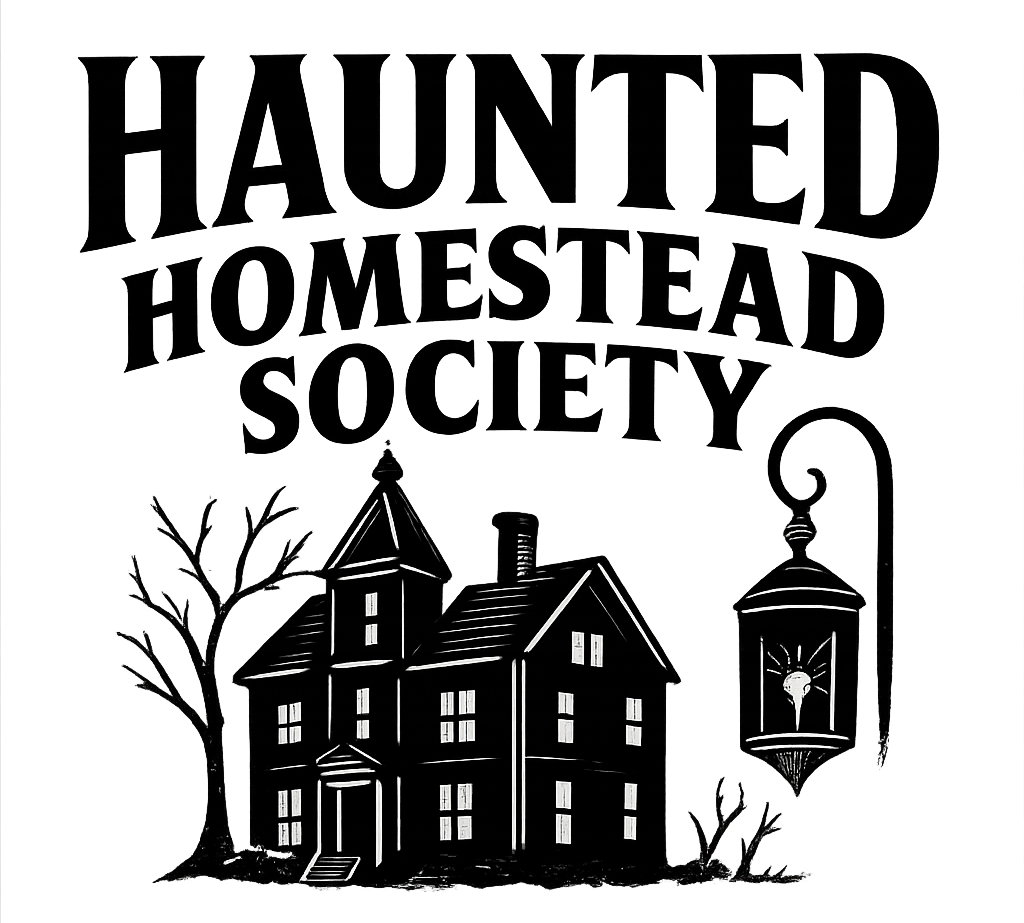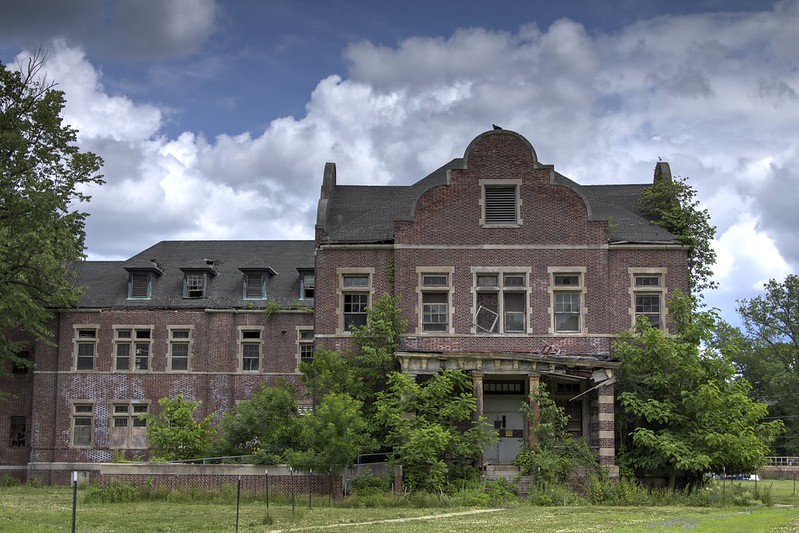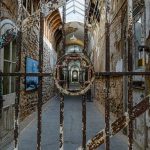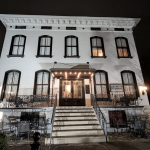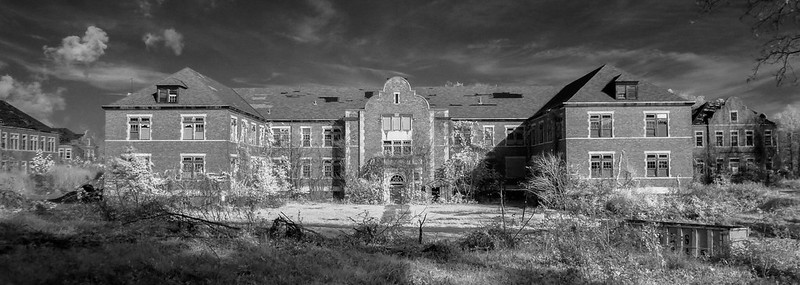
A Place the Ghosts Never Left
Hidden deep in the woods of Spring City, Pennsylvania, the crumbling remains of Pennhurst Asylum still echo with the whispers of its past. Opened in 1908 as the Eastern State Institution for the Feeble-Minded and Epileptic, Pennhurst began as a place meant to care for those society cast aside. But as the years went on, overcrowding, underfunding, and outdated ideas about mental health turned it into something far more sinister. By the 1930s, the sprawling campus held thousands of residents—many confined not for illness, but for simply being different, poor, or unwanted. The once-hopeful facility became a place of isolation, punishment, and forgotten souls.
By the mid-20th century, Pennhurst’s reputation had shifted from misunderstood hospital to nightmare institution. In 1968, a shocking television documentary called Suffer the Little Children exposed scenes of neglect and abuse that horrified the nation. Viewers saw children left unattended, adults restrained for days, and patients rocking silently in filthy wards. The exposé sparked outrage and led to years of investigations and legal battles. The most significant of these, Halderman v. Pennhurst (1977), revealed widespread violations of human rights—and ultimately helped bring about the end of institutional care on such a massive, inhumane scale.
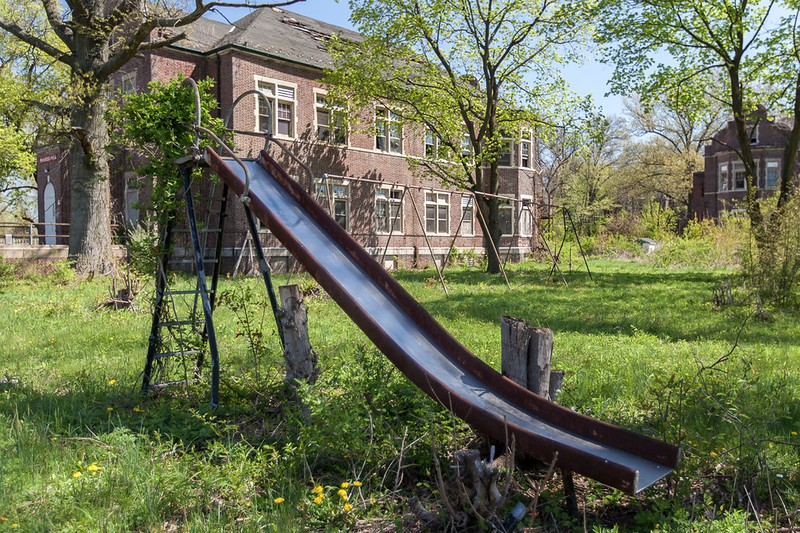
“Pennhurst Asylum” by Fred Dunn, CC BY-NC 2.0When Pennhurst finally shut its doors in 1987, the echoes of its long, tragic history refused to fade. Over the decades, paranormal investigators, urban explorers, and thrill-seekers have reported ghostly encounters within its decaying halls—phantom footsteps, distant screams, and shadows that seem to move on their own. Whether these hauntings are real or simply the echo of a dark legacy, Pennhurst stands today as one of America’s most chilling reminders of how easily compassion can turn to cruelty. The buildings remain—a haunting monument to both human suffering and the restless spirits that might still linger there.
Visitors report:
- Apparitions in patient wards and tunnels
- Disembodied screams and whispers
- Shadow figures crawling along walls
- Cold spots and sudden nausea
- A presence in the Quaker Building that watches—and waits
This is not just a haunted asylum. It’s a place where trauma echoes through time.
From Idealism to Infamy
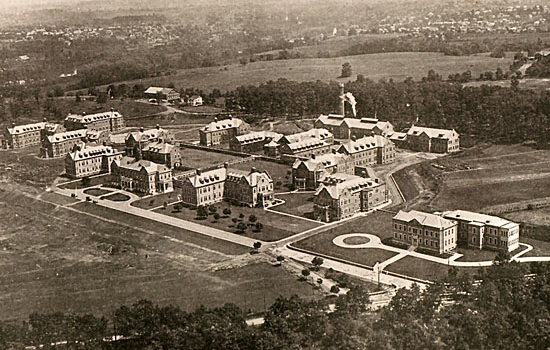
Public Domain, Link1903 – Authorized by the Pennsylvania legislature to house “feeble-minded” individuals. Construction begins.
1908 – Pennhurst opens its doors. The first patient is admitted on November 23.
1910s–1930s – The population swells. Patients are classified by physical and mental condition, including “imbecile,” “epileptic,” and “insane.” Many are abandoned by families.
1940s–1960s – Overcrowding and abuse become rampant. Staff are overwhelmed. Patients are neglected, restrained, and subjected to experimental treatments.
1968 – A local news report titled “Suffer the Little Children” exposes horrific conditions. Public outrage grows.
1970s–1980s – Lawsuits and investigations lead to gradual closure. Patients are relocated. The facility officially closes in 1987.2000s–Present – Paranormal investigations begin. Pennhurst becomes one of the most haunted locations in the country.
Architecture of Isolation
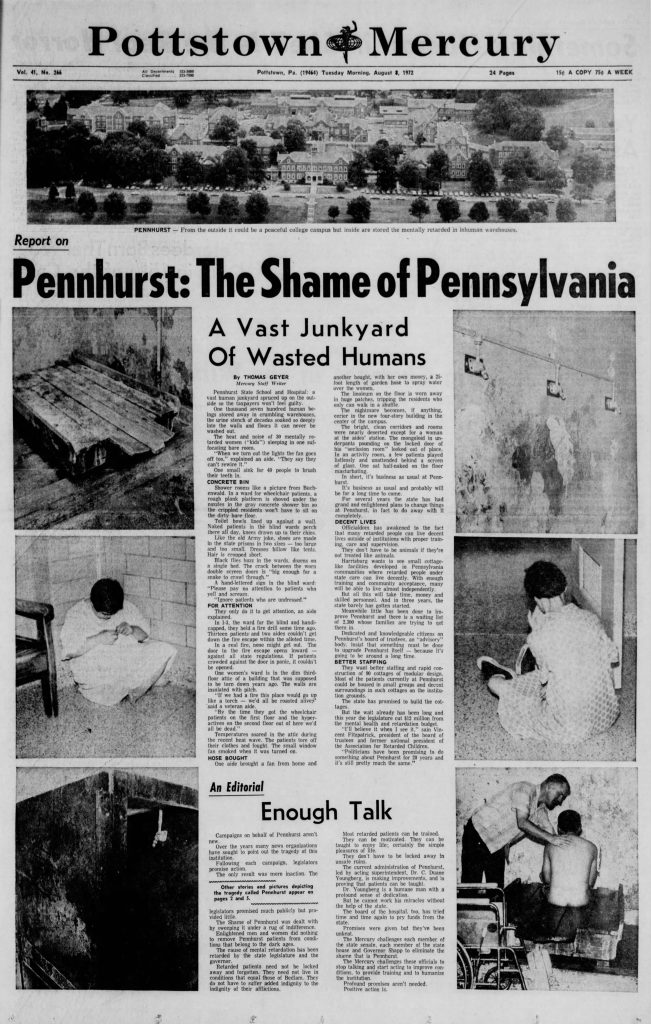
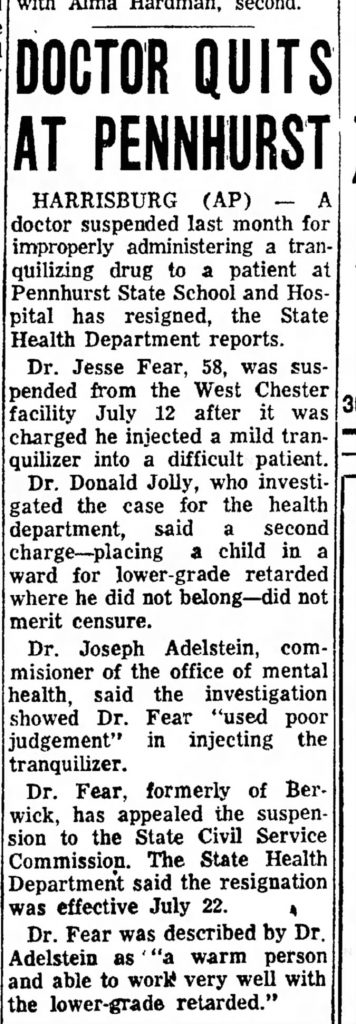
Pennhurst was designed as a self-contained village. Its features include:
- Dormitories for children and adults
- Medical buildings and surgical suites
- A school and administrative offices
- Underground tunnels connecting buildings
- Isolation rooms and padded cells
The layout created a sense of confinement. Long corridors, barred windows, and locked doors turned the campus into a prison. Paranormal teams believe the architecture traps residual energy.
The Death Toll
Thousands died within Pennhurst’s walls. Causes include:
- Disease (tuberculosis, pneumonia)
- Abuse and neglect
- Suicide and self-harm
- Failed medical procedures
Records are incomplete, but estimates suggest over 10,000 deaths occurred on the property. Many were buried in unmarked graves. Some were never identified.
One nurse recalled:
“We lost people every week. Sometimes, no one even noticed.”
Paranormal Activity – Verified Reports and Haunted Hotspots
Pennhurst is considered one of the most haunted locations in the United States. Paranormal teams, psychics, and visitors have documented chilling phenomena.
The Quaker Building
Used for violent and severely disabled patients. Reports include:
- Apparitions of patients in hospital gowns
- EVPs of screaming and crying
- Cold spots and sudden dizziness
- Shadow figures pacing the halls
One investigator recorded a voice saying, “Don’t leave me.”
The Mayflower Building
Former dormitory for children. Reports include:
- Laughter and footsteps
- Toys moving on their own
- EVPs of “Play with me” and “Mama”
- Apparitions of small figures
One guest left a doll overnight. It was found in a different room the next morning.
The Underground Tunnels
Used to transport patients and supplies. Reports include:
- Apparitions of nurses and orderlies
- EVPs of coughing and shouting
- Cold drafts and shadows
- Feelings of panic and disorientation
Some investigators refuse to enter alone.
The Administration Building
Once the heart of Pennhurst. Reports include:
- Apparitions of doctors and staff
- EVPs of commands like “Hold him down”
- Sudden temperature drops
- Feelings of dread
One team captured a voice saying, “He’s not ready.”
The Shadow Man
A tall, dark figure seen throughout the campus. Described as “inhuman” and “malevolent.” Reports include:
- Sudden temperature drops
- Feelings of dread
- Apparitions that vanish when approached
- EVPs of growling and hissing
Some believe it’s not a ghost—but something darker.
Eyewitness Accounts
Tour Guide Testimony (2022): “I was locking up when I saw a man in a hospital gown standing in the hallway. He vanished when I turned the corner.”
Visitor Report (2023): “I heard screaming from the tunnels. I opened the door—no one was there. The room was freezing.”
Paranormal Team (2024): “We recorded a voice saying ‘She’s still here’ in the Quaker Building. The room was empty.”Psychic Medium (2025): “There are dozens of spirits here. Some are confused. Some are angry. One is watching me right now.”
Scientific and Skeptical Views
Skeptics argue that the hauntings are caused by:
- Sound distortion in long hallways
- Electromagnetic interference
- Psychological suggestion
But even skeptics admit: the building feels wrong.
Paranormal researchers cite:
- Consistent EVP results
- Apparition sightings by multiple witnesses
- Thermal anomalies and motion sensor triggers
- Historical alignment with reported phenomena
Cultural Symbolism
Pennhurst represents:
- Mental health history: The evolution of psychiatric care
- Isolation and suffering: The emotional toll of confinement
- Death and memory: The persistence of trauma
- Spiritual unrest: The refusal of the dead to be forgotten
Its haunting is not just spectral—it’s historical.
Reader Poll
Vote and share your thoughts.
The Darkness Never Ends
Pennhurst Asylum is a monument to suffering. Its walls have witnessed madness, cruelty, and death. Its halls echo with pain. And its spirits never left.
It was built to heal.
It became a place of horror.
And the darkness never ends.
